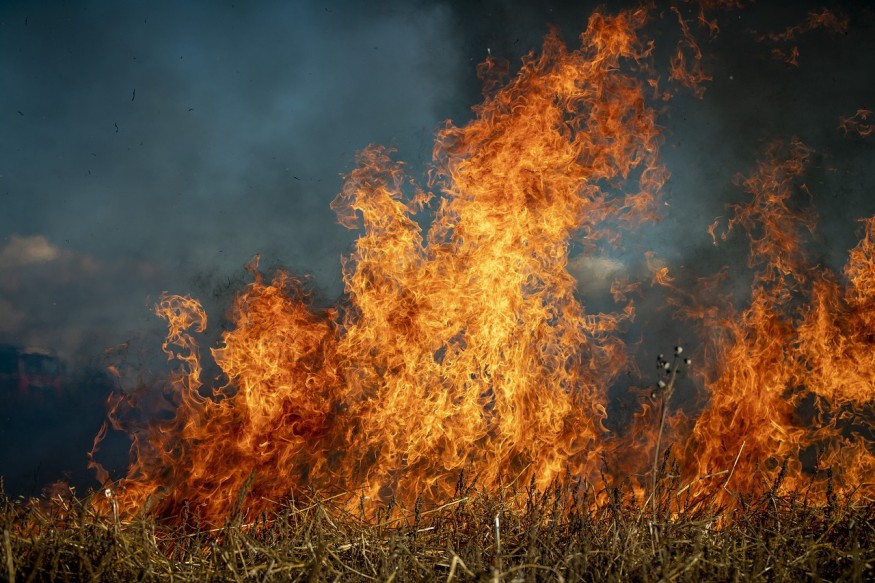
According to a new study, hotspots of methane in the Arctic tundra are more likely to be spotted in areas where wildfires recently took place.
The Arctic Tundra
Chunks of permafrost, which is frozen soil rich in carbon, are securing the majority of the Arctic Tundra. This layer takes carbon from the atmosphere and stores it for up to tens of thousands of years beneath the surface.
Peat, moss, and plant litter insulate the frozen soil. However, if this insulating blanket ends up hit by a wildfire in the tundra, the permafrost ends up thaw-vulnerable. When this takes place, the carbon buildup is then released. Microbes under the soil then turn it into methane, which is a strong greenhouse gas that adds to climate change and affects northern latitude changes all over the globe.
ALSO READ : California Wildfire Turns Into a Feast for Marine Bacteria, Fuels Growth of Diverse Eukaryotic Plankton
Methane Hotspots in the Arctic Tundra
Now, a study has found that these hotspots of methane release are more likely to be found in areas where wildfires took place. The study, entitled "Tundra fire increases the likelihood of methane hotspot formation in the Yukon-Kuskokwim Delta, Alaska, USA," largely focused on the largest river delta, Yukon-Kuskokwim, of Alaska. This area was previously found to emit large methane quantities.
The reason behind methane hotspots was a subject of curiosity of scientists from the Arctic-Boreal Vulnerability Experiment (ABoVE) project of NASA. This project looks into Alaskan and western Canadian environmental changes. The methane hotspots were observed via aerial surveys back in 2017.
Elizabeth Yoseph, an intern back then who is the lead author of the study, overlaid the area maps with fire activity factored in.
The team discovered that these methane hotspots had a nearly 30% higher likelihood to take place in areas where wildfires hit in the last 50 years. This was compared to areas that remained unburned. This likelihood went up to almost 90% when the perimeters of the fire got into contact with water.
The highest hotspot ratio was observed in wetlands that were recently burned and that contained soil which was especially carbon-rich. Yoseph explains that fires crucially impact growing emissions.
The findings are quite large, covering nearly 700 square miles across Alaska. According to ecologist Merritt Turetsky from the University of Colorado-Boulder, the findings aid with complementing measurements in the field. Turetsky did not participate in the study efforts. She notes that it is necessary to understand what takes place in the ground and what can be picked up through satellite shots.
Aerial surveys aid understanding of the growing tundra. This is specifically what limits field research as there are road networks that typically avoid terrains that are marshy.
Thawing permafrost effects have reached beyond the far North area. The impact of wildfires on the permafrost spurs a climate feedback loop, wherein wildfire-released methane ends up boosting climate change that fuels the frequency of wildfires.
While these wildfires in the tundra are still quite rare, they are increasing in number due to warming temperatures and more lightning. There are also projections that show that wildfires within the delta could end up quadrupling when the century ends. Without any tall trees where flames could climb, these fires end up slowly creeping into the ground.
Grave Consequences
Considering the amount of carbon stored in the soil, the consequences of this phenomenon are grave. The permafrost in the tundra is a huge repository that stored roughly 1.7 billion metric tons of carbon, which is more than 50 times the globally released fossil-fuel emissions of 2019.
Turetsky notes that these massive and seasonal releases of greenhouse gasses should be an object of focus if the climate future is to be addressed, adding that these wildfires are not of help.
Check out more news and information on Environment & Climate in Science Times.
© 2025 ScienceTimes.com All rights reserved. Do not reproduce without permission. The window to the world of Science Times.











